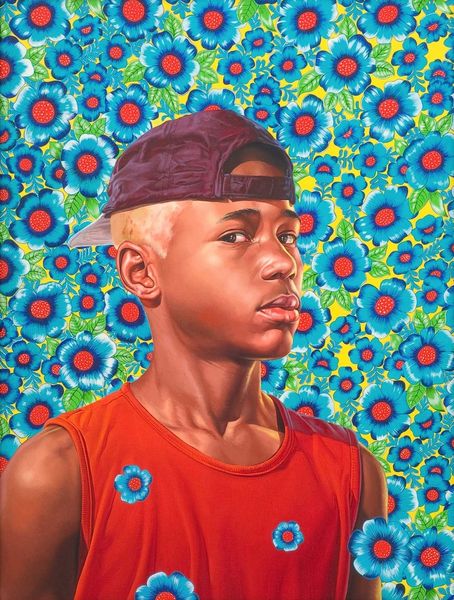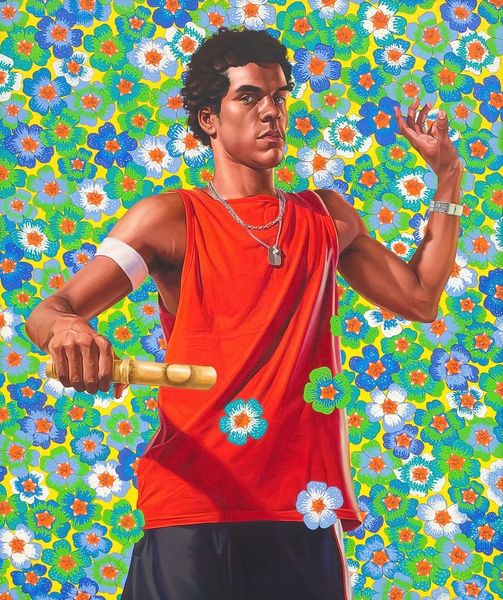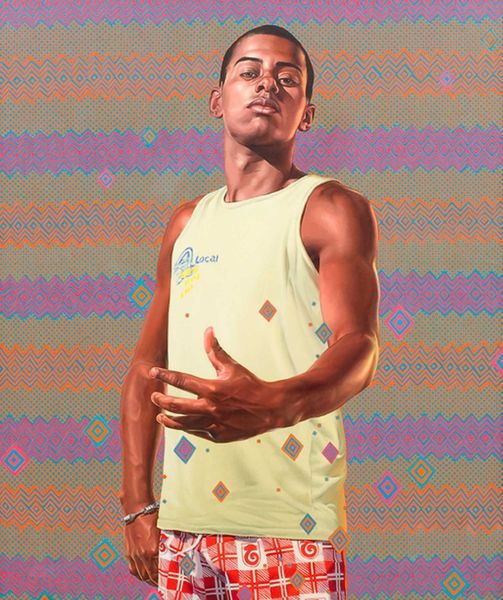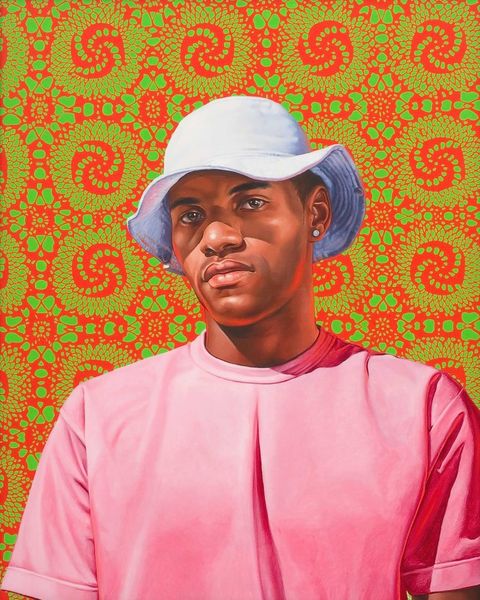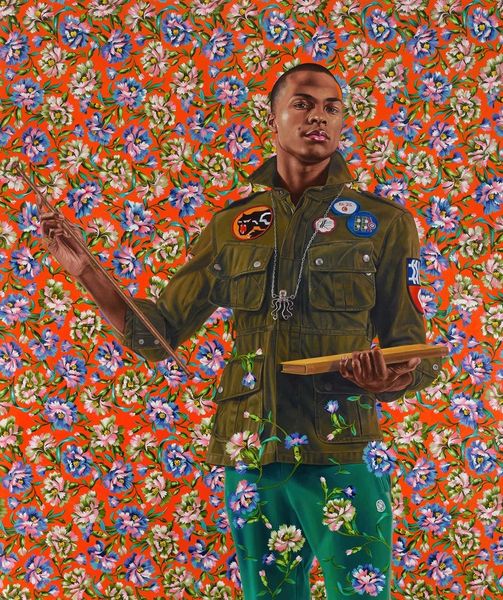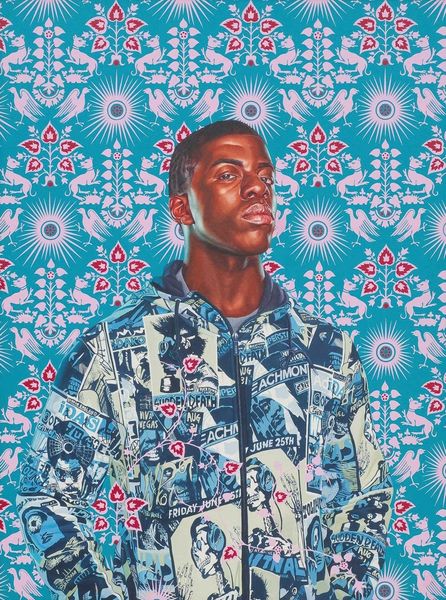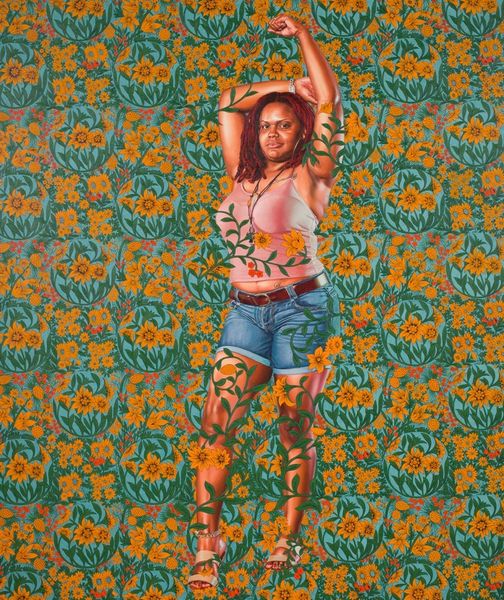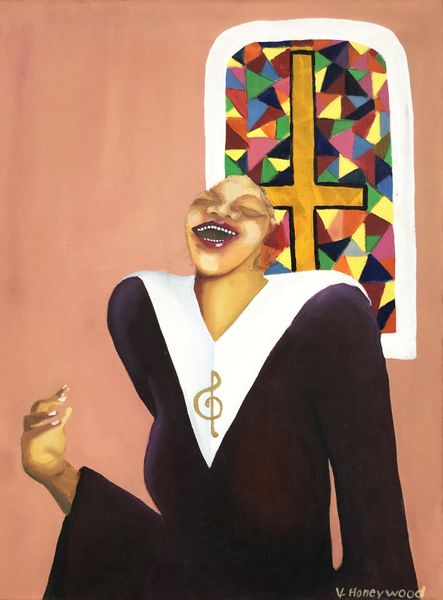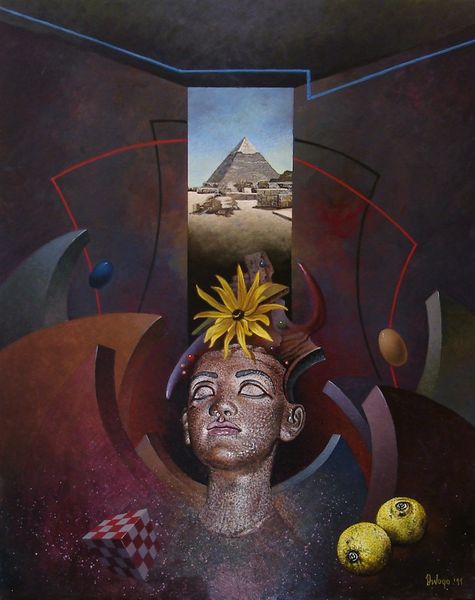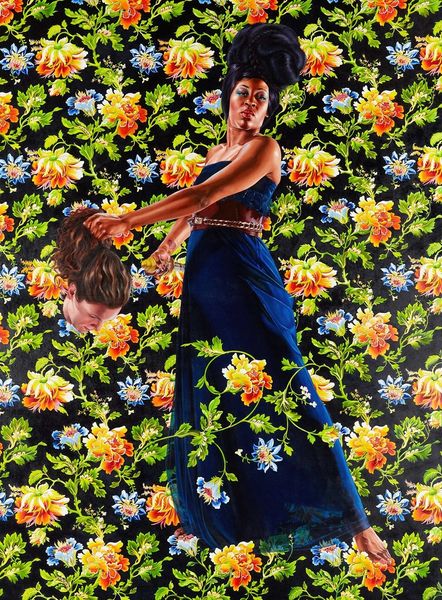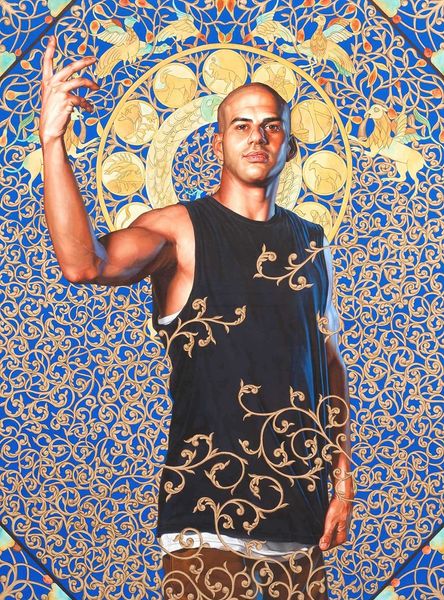
#
pattern-and-decoration
Copyright: Modern Artists: Artvee
Curator: Welcome. We’re standing before Kehinde Wiley’s “Alegoria A Lei Do Ventre Livre,” created in 2009 using mixed media including acrylic paint. Editor: My immediate reaction is of vibrancy and defiance. The contrast between the assertive figure and the almost overwhelmingly colorful backdrop really grabs the attention. There’s a deliberate tension. Curator: Indeed. Wiley masterfully appropriates the visual language of historical portraiture while subverting it. This work, and many others by Wiley, feature young Black men posed heroically against vibrant, patterned backgrounds. He recasts them as contemporary icons. Editor: And the composition—it's consciously flattened, almost like Pop Art. Look how the figure pushes forward, occupying nearly the entire visual field against the surface. The backdrop teems with flora, but it almost serves as a kind of ornate wallpaper. It emphasizes the figure rather than receding into a sense of depth. Curator: The title itself, “Alegoria A Lei Do Ventre Livre” which translates to Allegory of the Law of Free Womb, is packed with cultural meaning. This was a law in Brazil that declared all children born to enslaved women after 1871 to be free. The figure here seems to hold both a commemorative sign related to this law, and a broken chain—symbols that collapse past struggles with present realities. Editor: The broken chain is interesting. Visually, it adds a layer of grit. A powerful yet simple element juxtaposed against the bright color. Is the background's tropical nature intended to root the subject culturally? Curator: Precisely. Wiley is acutely aware of how symbols operate within collective memory. By integrating the figure within a landscape replete with specific cultural associations, it’s grounding him while simultaneously raising critical questions about identity and power. The abundance of foliage perhaps references ideas of home, paradise lost, perhaps even abundance and a reclamation of those things. Editor: The overall impact is incredibly bold, really forces the viewer to confront preconceived notions of representation and power. I walk away with a lot more than a surface-level interpretation of beauty. Curator: Absolutely. It makes you ponder how artistic traditions can both celebrate and liberate through visual representation, reframing historical narratives with powerful imagery.
Comments
No comments
Be the first to comment and join the conversation on the ultimate creative platform.
